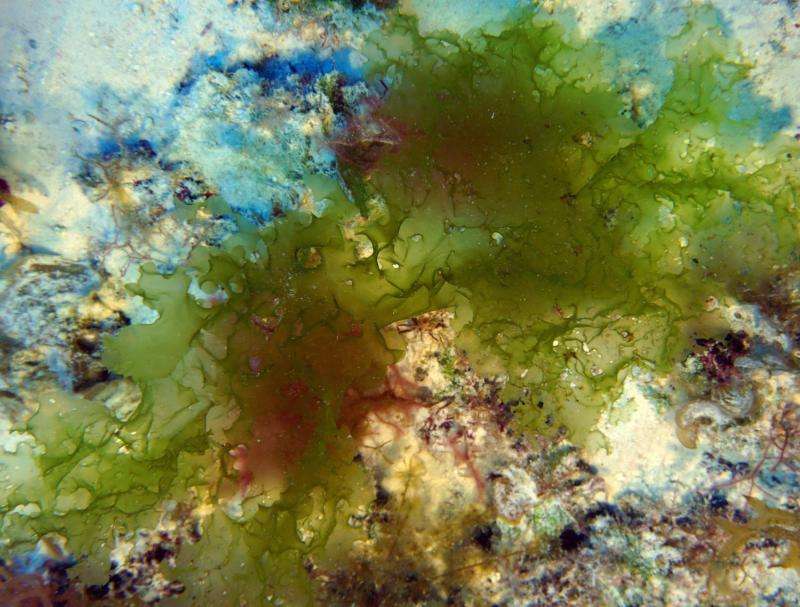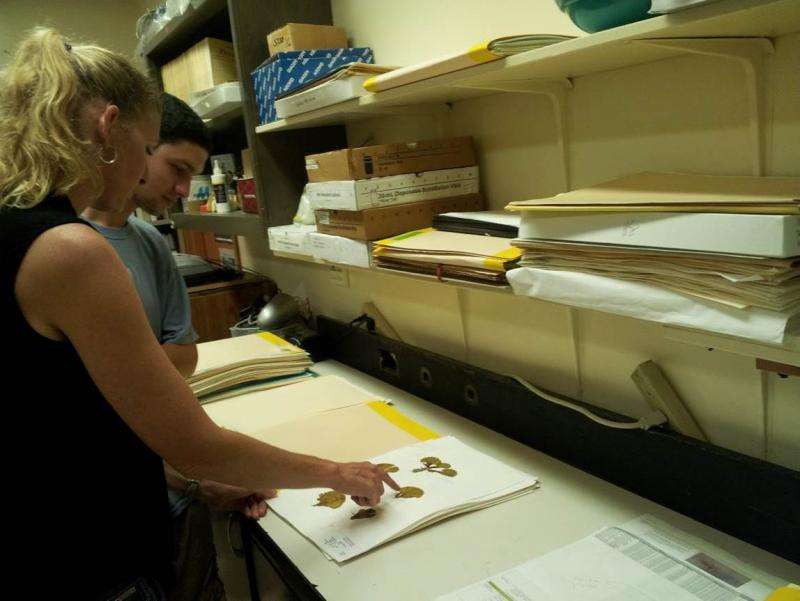Four new algae species discovered in Hawaii's deep waters

Scientists working with NOAA's Office of National Marine Sanctuaries announced the discovery of four new species of deep-water algae from Hawaii. Marine algae, or limu, are very important in Hawaiian culture, used in foods, ceremonies and as adornments in traditional hula. The new species of limu were collected between 200-400 feet, depths not typically known for marine algae.
Heather Spalding, Ph.D., postdoctoral researcher at the University of Hawaii Department of Botany and lead author of the study, said, "I was astounded at the abundance and size of these algae, which resembled something you would see in a shallow-water lagoon, not at 400 feet."
Spalding has been collaborating with NOAA's Office of National Marine Sanctuaries for several years studying samples collected by NOAA divers working in Papahanaumokuakea Marine National Monument. She and her colleagues at the University of Hawaii and University of Washington's Friday Harbor Laboratories conducted DNA analyses that showed that the species are very different than those found in Hawaii's shallow waters, even though they are very similar in appearance.
"If you picked up one of these algae on the beach, you couldn't tell if it was from a nearby rock or washed up from the deep, the species look that similar," Spalding said.
The newly discovered species are similar in appearance to limu palahalaha (Ulva lactuca), or sea lettuce. Scientists consulted with the Native Hawaiian community to develop meaningful names for the new species to honor the great importance they have in Hawaiian culture. One species was named Ulva iliohaha, which refers to the foraging behavior of ilioholoikauaua, the endangered Hawaiian monk seal, one of the best-known residents of Papahanaumokuakea.

The species were sampled during surveys between 2013 and 2015 in Papahanaumokuakea Marine National Monument by NOAA divers using advanced SCUBA diving technologies, and during past NOAA expeditions from 2006 to 2014 throughout the Main Hawaiian Islands using submersibles operated by the Hawaii Undersea Research Laboratory. Scientists anticipate that many additional new species of algae will be described in the coming years from samples collected by NOAA divers on future expeditions to the monument.
"These findings redefine our understanding of algal distributions in Hawaii, and hint at the great number of other new species that are likely to be discovered in the future from these amazing deep-water reefs," said Daniel Wagner, Papahanaumokuakea research specialist with NOAA's Office of National Marine Sanctuaries.
More information: Heather L. Spalding et al. New Ulvaceae (Ulvophyceae, Chlorophyta) from mesophotic ecosystems across the Hawaiian Archipelago, Journal of Phycology (2015). DOI: 10.1111/jpy.12375
Journal information: Journal of Phycology
Provided by NOAA Headquarters



















